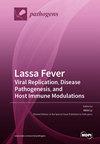匈牙利猫狗中猫衣原体的发生率
IF 3.3
3区 医学
Q2 MICROBIOLOGY
引用次数: 0
摘要
据世界卫生组织(WHO)估计,许多人类感染的疾病都是人畜共患疾病,这给全球公共卫生带来了挑战。在衣原体种类中,猫衣原体是猫结膜炎的主要病原体,也是人畜共患的主要病原体。本研究旨在确定匈牙利塞格德及周边地区猫狗衣原体病的发生率和风险。使用自动核酸提取系统从有症状和无症状动物的结膜拭子样本中提取总核酸。然后通过泛衣原体 PCR 扩增 DNA。此外,还进行了细菌和真菌培养,以检测其他微生物。93 只动物中有 32 只(34.4%)在泛衣原体 PCR 检测中呈阳性。猫的阳性率为 33.3%(26/78),狗的阳性率为 40.0%(6/15)。此外,猫收容所的阳性率为 37.2%(16/43),兽医诊所为 42.4%(14/33),家庭宠物为 11.7%(2/17)。通过培养检查共鉴定出 103 个物种,包括 97 个(94.2%)细菌物种和 6 个(5.8%)真菌物种。从人类和动物健康的角度来看,鉴于人畜共患病对全球的影响,详细了解衣原体病的情况至关重要。本文章由计算机程序翻译,如有差异,请以英文原文为准。
The Occurrence of Chlamydia felis in Cats and Dogs in Hungary
The World Health Organization (WHO) estimates that many human infections are zoonoses, creating a worldwide public health challenge. Among Chlamydia species, Chlamydia felis is the leading cause of conjunctivitis in cats and is a prominent zoonotic species. This study aimed to determine the occurrence and risk of chlamydiosis in cats and dogs in Szeged, Hungary, and surrounding areas. The total nucleic acids from conjunctival swab samples of symptomatic and asymptomatic animals were extracted using an automated nucleic acid extraction system. After that, DNA was amplified by pan-chlamydia PCR. Bacterial and fungal cultures were also performed to detect other microorganisms. Of the 93 animals, 32 (34.4%) were positive for pan-chlamydia PCR. The positivity rates were 33.3% (26/78) in cats and 40.0% (6/15) in dogs. Furthermore, the positivity rates were 37.2% (16/43) in the cat shelter, 42.4% (14/33) in the veterinary clinic, and 11.7% (2/17) in household pets. In total, 103 species were identified through culture-based examinations, including 97 (94.2%) bacterial and 6 fungal (5.8%) species. From both human and animal health perspectives, it is essential to have a detailed understanding of the circumstances of chlamydiosis, given the global impact of zoonotic diseases.
求助全文
通过发布文献求助,成功后即可免费获取论文全文。
去求助
来源期刊

Pathogens
Medicine-Immunology and Allergy
CiteScore
6.40
自引率
8.10%
发文量
1285
审稿时长
17.75 days
期刊介绍:
Pathogens (ISSN 2076-0817) publishes reviews, regular research papers and short notes on all aspects of pathogens and pathogen-host interactions. There is no restriction on the length of the papers. Our aim is to encourage scientists to publish their experimental and theoretical research in as much detail as possible. Full experimental and/or methodical details must be provided for research articles.
 求助内容:
求助内容: 应助结果提醒方式:
应助结果提醒方式:


